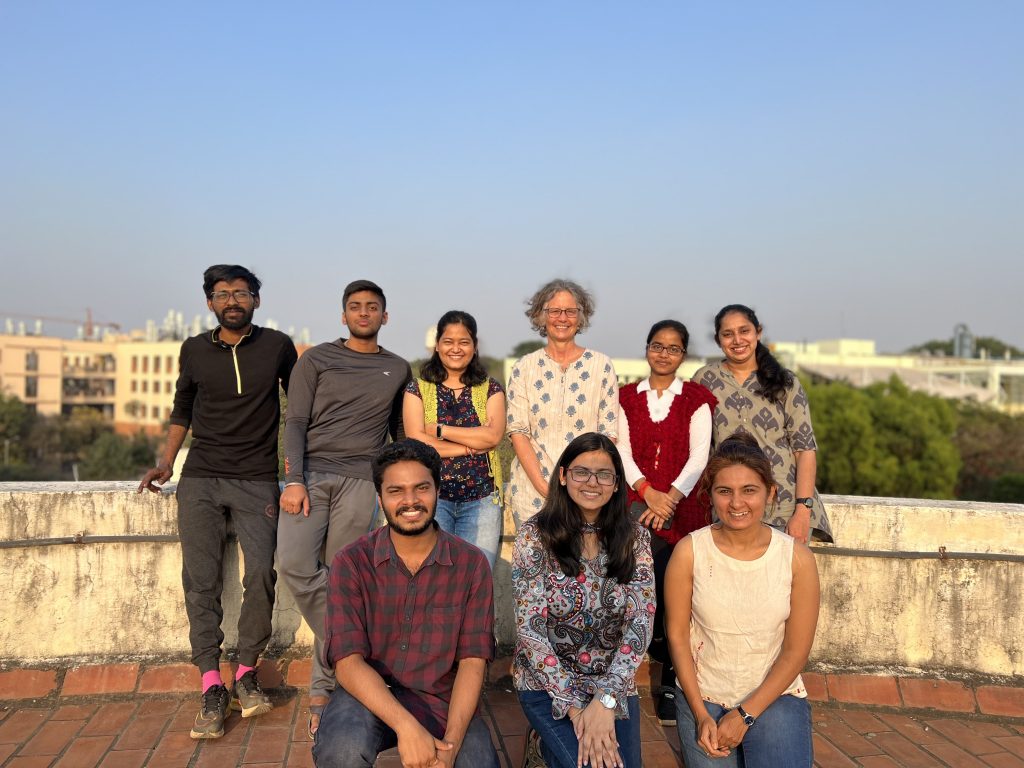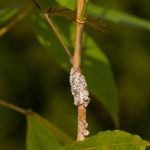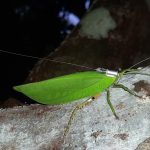Saskya van Nouhuys and her team delve into the lives of insect parasites inside insect parasites that invade butterfly larvae
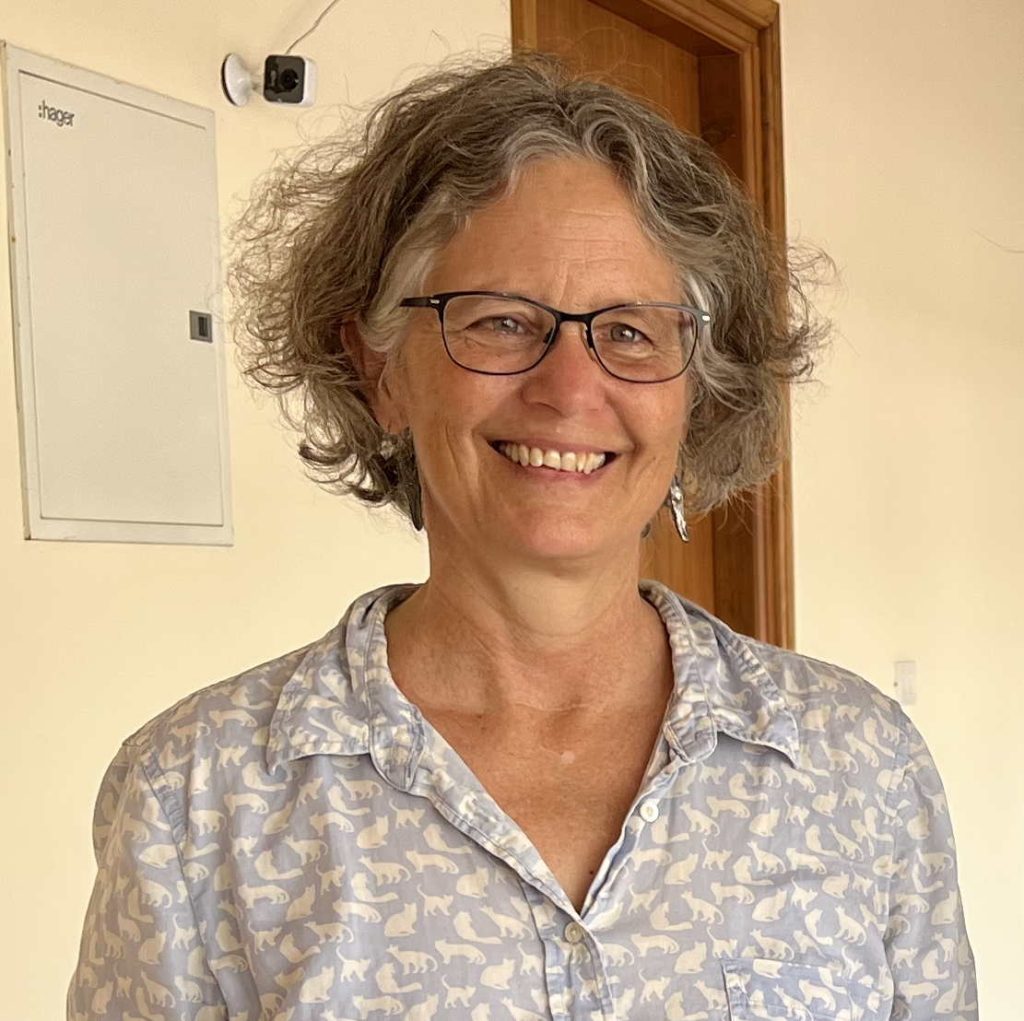
The incredible interconnectedness of living beings that hinges on the survival of each of them is what Saskya van Nouhuys likes to explore. Saskya, Associate Professor at the Centre for Ecological Sciences at IISc, has studied individual and population-level interactions of insects in diverse regions, from boreal Finland to warm, tropical India.
Brought up in California by parents with a humanities background, it was years before Saskya realised that one could become a biologist. She describes her younger self as a “snakes-and-lizards” kid. She had pet snakes that she would observe, but it wasn’t until she joined the University of California at Santa Cruz as an undergraduate student that she realised it was her calling.
“I was obviously a biologist; I just didn’t know I could be one!” she explains.
As she was completing her PhD from Cornell University in 1997, an opportunity to study metapopulation dynamics of butterflies and their parasitic wasps came up in the University of Helsinki, Finland. Having worked on this project for 20 years now, she says, “I dabble in many things, but the things that I know most about are parasitoid wasps and their hosts, and the relationship between these parasitoids, hosts and the plants that the hosts feed on.”
Fieldwork in Finland
Host-parasite interactions is a vast area of investigation. Saskya studies butterflies (the hosts), parasitoid wasps (the primary parasites), and hyperparasitoid wasps (the secondary parasites that invade the primary parasites). Most of the known parasitoids belong to the wasp family, and the hosts are arthropods such as insects and spiders. For every stage in the development of butterflies – egg, larva, pupa, adult – there exist stage-specific parasitoid wasp species.
A parasitoid is a specific kind of parasite. As an adult, it looks like a normal wasp, flying around, eating nectar. But then, using a sharp syringe-like organ called ovipositor, it lays eggs inside or on the host. A larva emerges from each egg and starts feeding on the fluids from the host’s body. As it develops further, it feeds on other tissues and fats. Then it spins a silken cocoon around itself and pupates, either inside or outside the body of the host depending on the species. The success of the parasitoid depends on the host’s immune response, and Saskya’s team is studying the virulence of the parasitoid in relation to the susceptibility of the host.
The scenario becomes more complicated when the hyperparasitoid – the parasitoid of the parasitoid – comes into play. It first needs to find the host – in this case the butterfly caterpillar – with a parasitoid larva inside it, and then lay eggs in that larva. Saskya believes that it finds the host the same way that a parasitoid does – by following odours. However, only a few of the host caterpillars would have parasitoids inside them.
“I think they [hyperparasitoids] have a lot of trouble [searching for the parasitoid larva inside the host],” says Saskya. “A hyperparasitoid I studied extensively spent the whole afternoon poking [at the host caterpillar]. Literally hours,” she laughs. She suggests that the hyperparasitoid may inject an anaesthetic through its ovipositor into the host caterpillar, rendering it open to such invasive exploration.
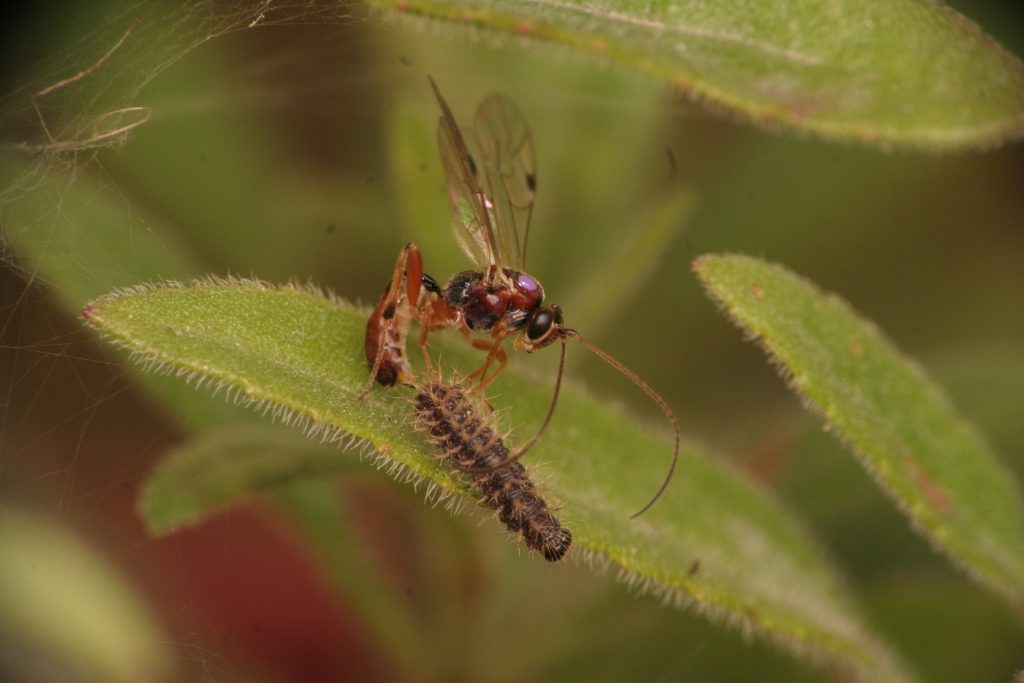
There is one other player in this network of hosts and parasites – a bacterium called Wolbachia. Saskya says the bacteria have a very complicated relationship with the organisms they inhabit. They manipulate their hosts’ biology for their own reproduction and survival in the host population. The bacteria she studies are present in the parasitoid population, but curiously, only in half the individuals in a population.
“If it is good for the host, then all individuals would have it; but if it is bad, then none should have it. Since half of them have it – it must be good and bad,” Saskya says, presenting a possible explanation. Her team found that these bacteria make parasitoids more sensitive to infection by hyperparasitoids. “So that’s the bad thing. We haven’t found the good thing yet,” she laughs.
This study was done in Finland, but once they have a reliable catalogue of hosts, parasitoids and hyperparasitoids, she hopes to be able to do similar studies in India too.
From Finland to India
The climate in Finland is drastically different from India. “Because of the extreme temperatures in Finland, it has a simpler environment,” Saskya explains. The growing season for most life forms in Finland is only from April end till August end, and after that, everything shuts down because of winter. Compared to India, there is very little diversity of insects or plants. To highlight the hurdles she faced when starting work in India, Saskya says, “There aren’t many species in Finland, and people have been cataloging them systematically for years. In Europe, there is a culture of doing that … My work in Finland was based on long-term research. I did surveys every year for 20 years, and so I looked at population dynamics over time. I relied on that background information – I knew how population sizes were changing, and I tried to figure out why.”
In India, the huge diversity of insect species and limited availability of information means that she needs to start from scratch. As the first step, she and her students started identifying parasitoid species – many of which are brand new and have no records – and observing their behaviour in different contexts.
Apart from field studies, the team also works in the laboratory. “To get to the parasitoid, we must bring the eggs, larvae and pupae to the lab. We are bringing in different stages of butterflies that feed on citrus to look for parasitoids in each,” she explains. They rear the organisms in plastic boxes, feed caterpillars with citrus leaves, and then observe what parasitoids and hyperparasitoids emerge. If it is something unknown to them, they consult a taxonomist. They also extract DNA and look for known molecular markers. However, Saskya says that they are yet to find species of parasitoids or hyperparasitoids that are familiar to her.
To continue with her study on host-parasitoid-hyperparasitoid interactions, Saskya’s team has chosen to study Blue Mormon, Common Mormon and lime Mormon butterflies from the genus Papilio. These insects feed on native plants from the citrus family such as lime and curry leaves. A community of butterflies and moths has evolved to feed on these plants, and a community of parasitoids has evolved to invade them. Since there are specific parasitoids for each stage in the life cycle of the host, has the life cycle of the parasitoid evolved to match it?

Saskya says that in Finland, where everything gets synchronised by the very cold winters, their life cycles match very well. In India however, there is no rigid “reset” every year. Still, although butterflies are found all year round, their numbers fluctuate with season, and these are matched by the parasitoid numbers.
There are several citrus plants on campus, and the nursery has lemon and curry leaf trees. The team has been collecting insects from these trees. One of Saskya’s PhD students, Anaswar P, is doing pilot studies to look at rates of parasitism by each parasitoid throughout the year. “During the summer, there were a lot of eggs of butterfly species on our plants,” Saskya says. But their adult population didn’t increase. Upon searching for the cause of mortality, they realised that the eggs were dying. “They were virtually all parasitised. Such studies are hard, since butterfly eggs are tiny.”
Although data collection is tough, analysing it is more challenging. Elaborating on this, Saskya narrates what she describes as her proudest moment. “Parasitoids must fly around looking for hosts that are at the correct developmental stage,” she begins. “For example, if you are an egg parasitoid, then you have to find and parasitise the host when it is an egg.”
She was studying a wasp species in Finland, belonging to a family of parasitoids invading butterfly larvae. She discovered that while her species was also a larval parasitoid, it parasitised the larva just before it hatched from the egg. This meant that the interval during which the host could be parasitised was really short. How this could be achieved was a mystery. Saskya says, “I figured out that the parasitoid wasps find host eggs way before they are ready, and they memorise where they are. They fly around, and once they find an egg cluster, they keep monitoring it. At one time, they may know locations of about 28 clusters in the area, and they just wait for them to be ready to be parasitised.” She believes that the wasps decide the time is ripe based on the changing odour, and because the eggshells become thinner. “They try to get their ovipositor in every time they come,” she explains, making a drilling gesture. “They can’t do it at first, but after a while they can.”
There are several other projects going on in the lab. A postdoc, Prabitha Mohan, studies competition between two parasitoids using a single host species. She wants to know if the weaker of the two can evolve to parasitise a different host to avoid competition. Another postdoc, Suvarna Khadakkar, studies patterns of diversity and behaviour in communities of dung beetles in both pristine and degraded sacred groves.
In the long run, Saskya says her “fantasy” is to have tractable data on hosts, parasitoids and hyperparasitoids on the IISc campus.
